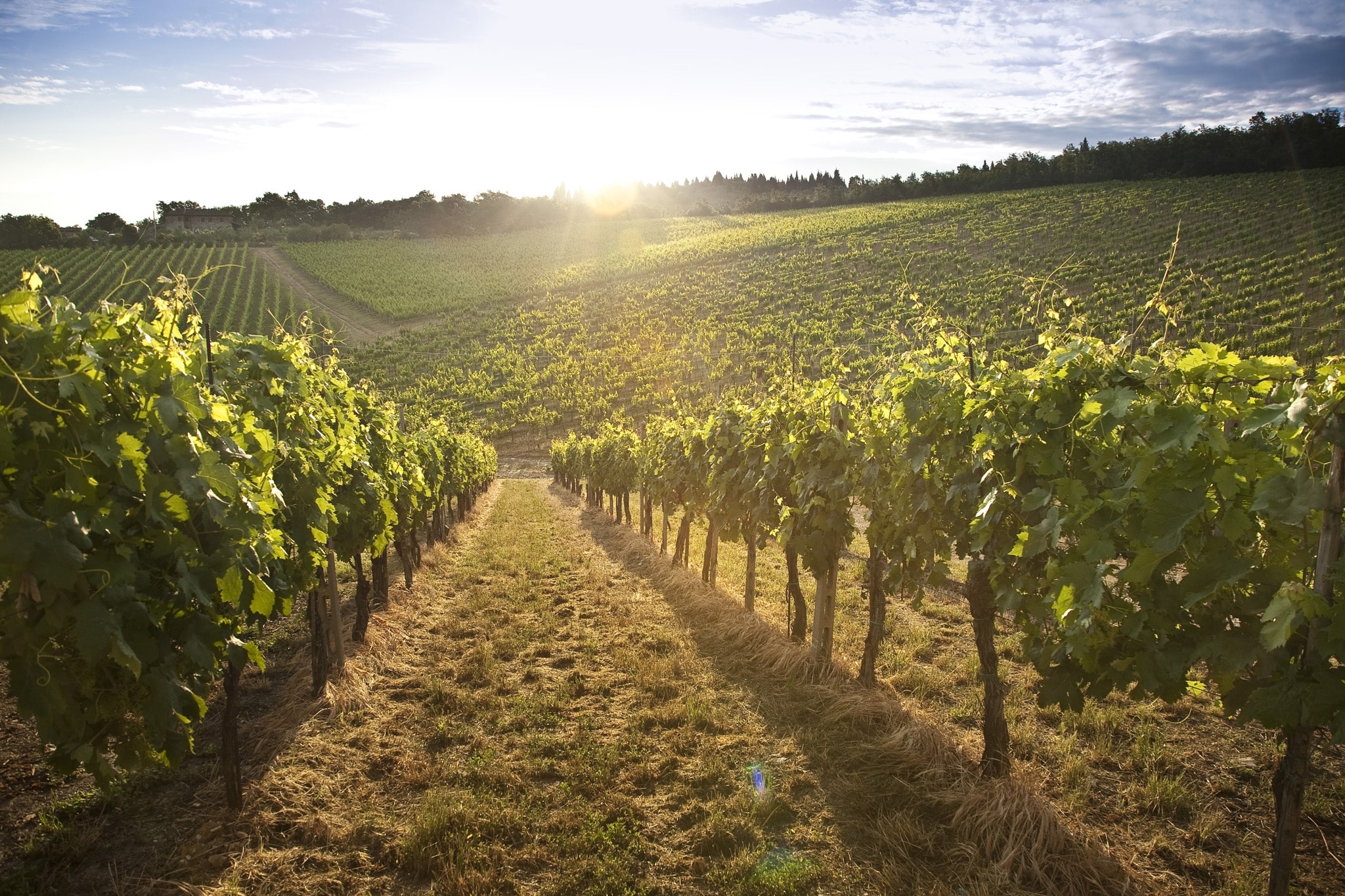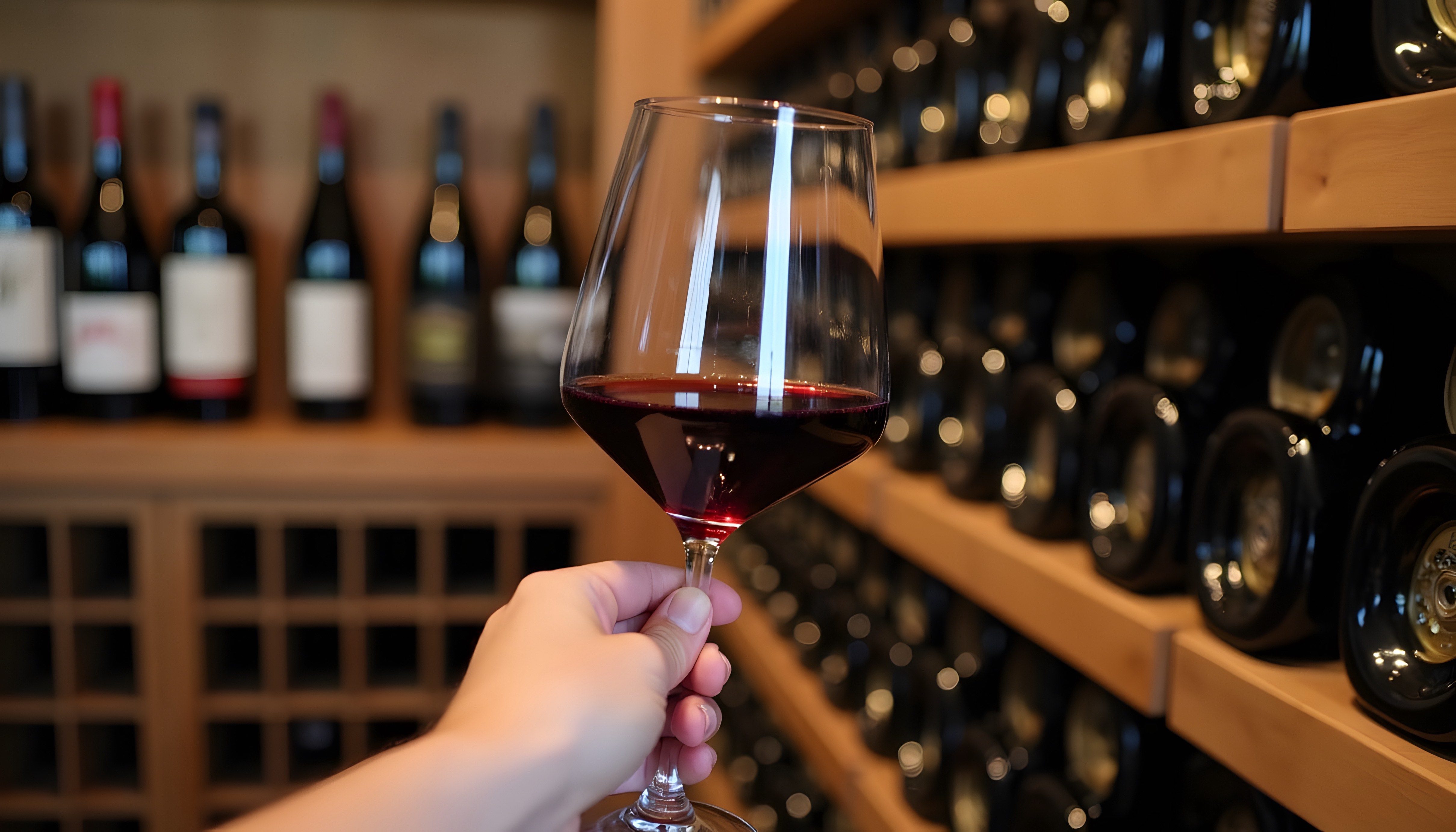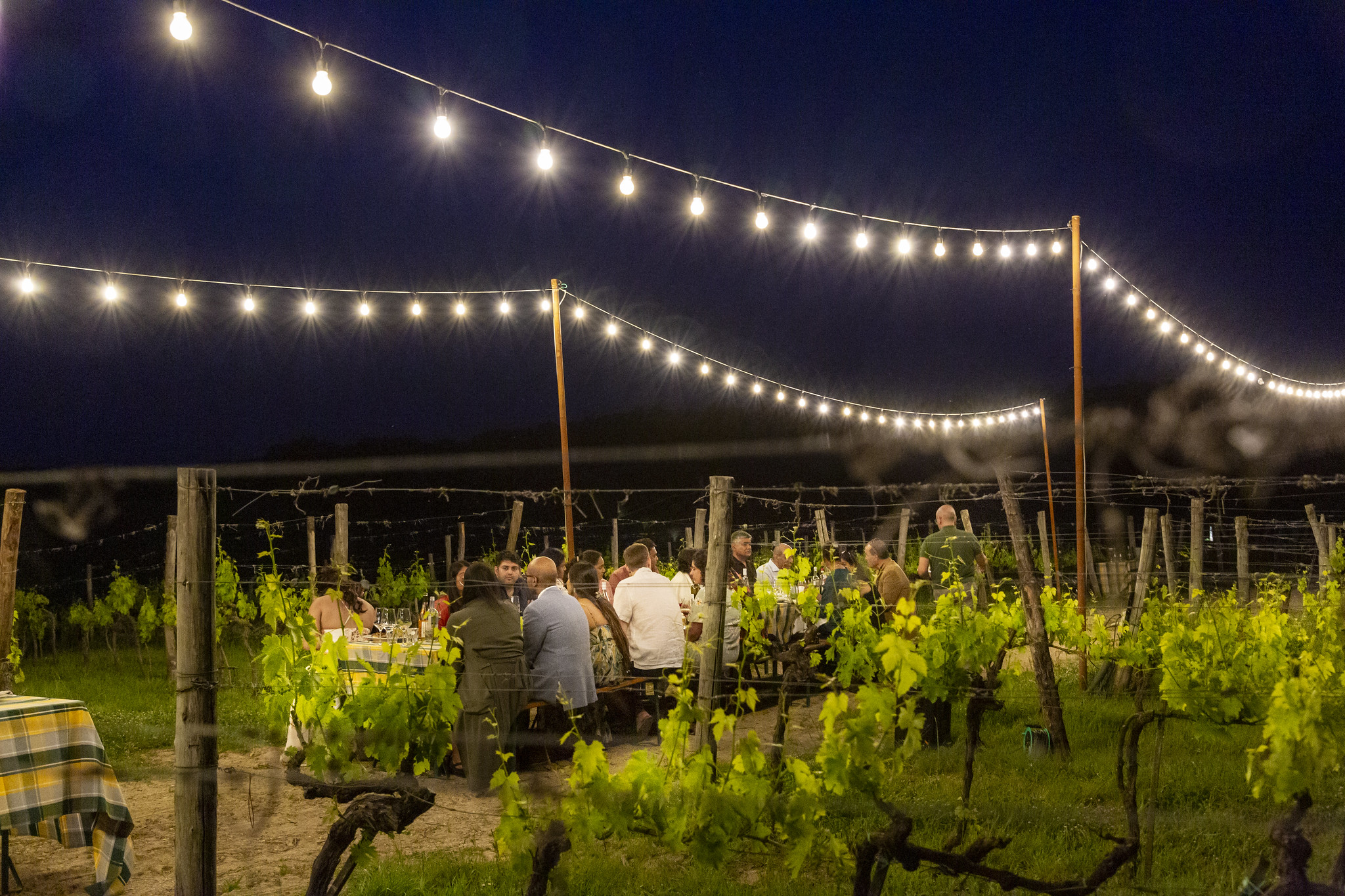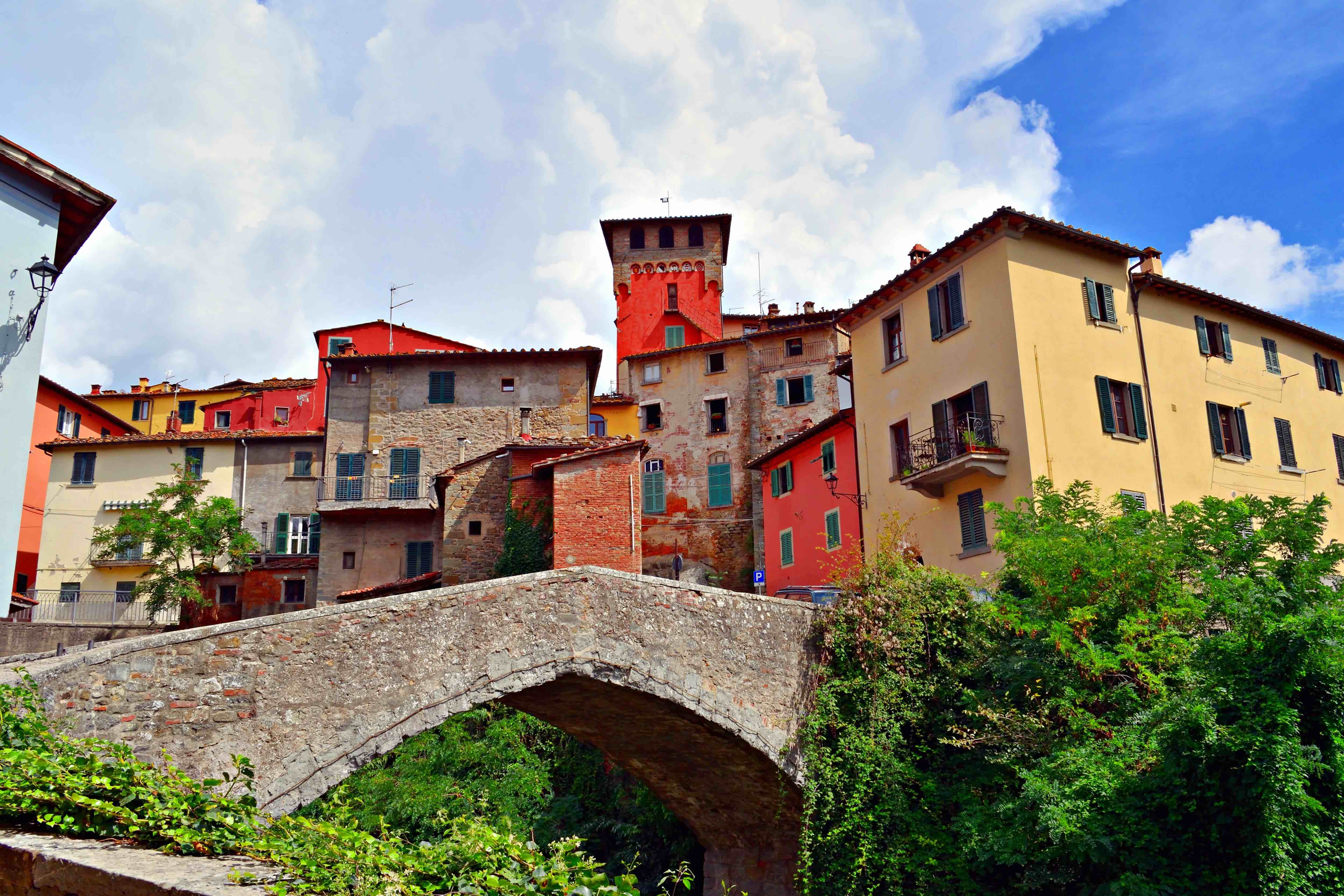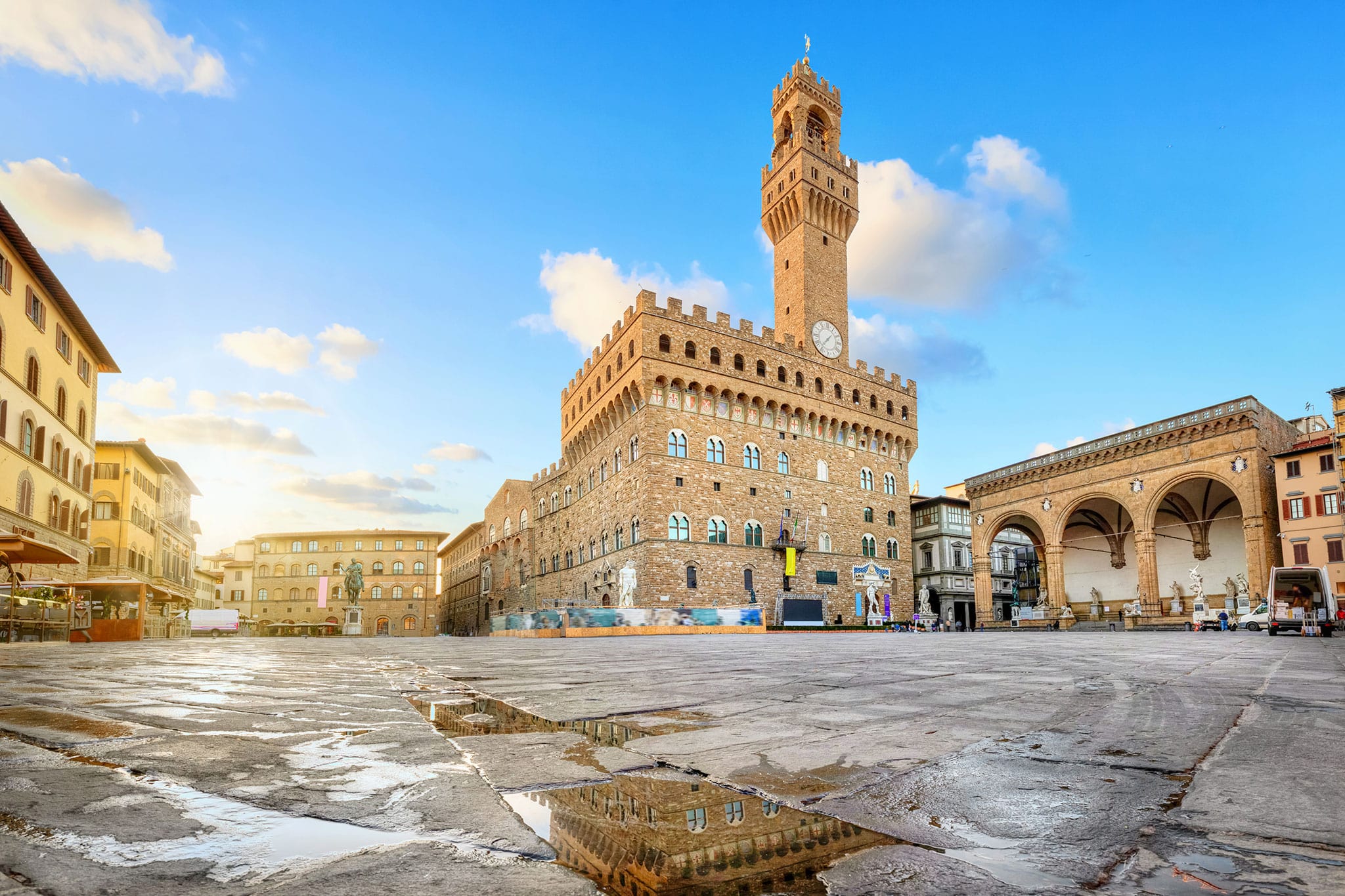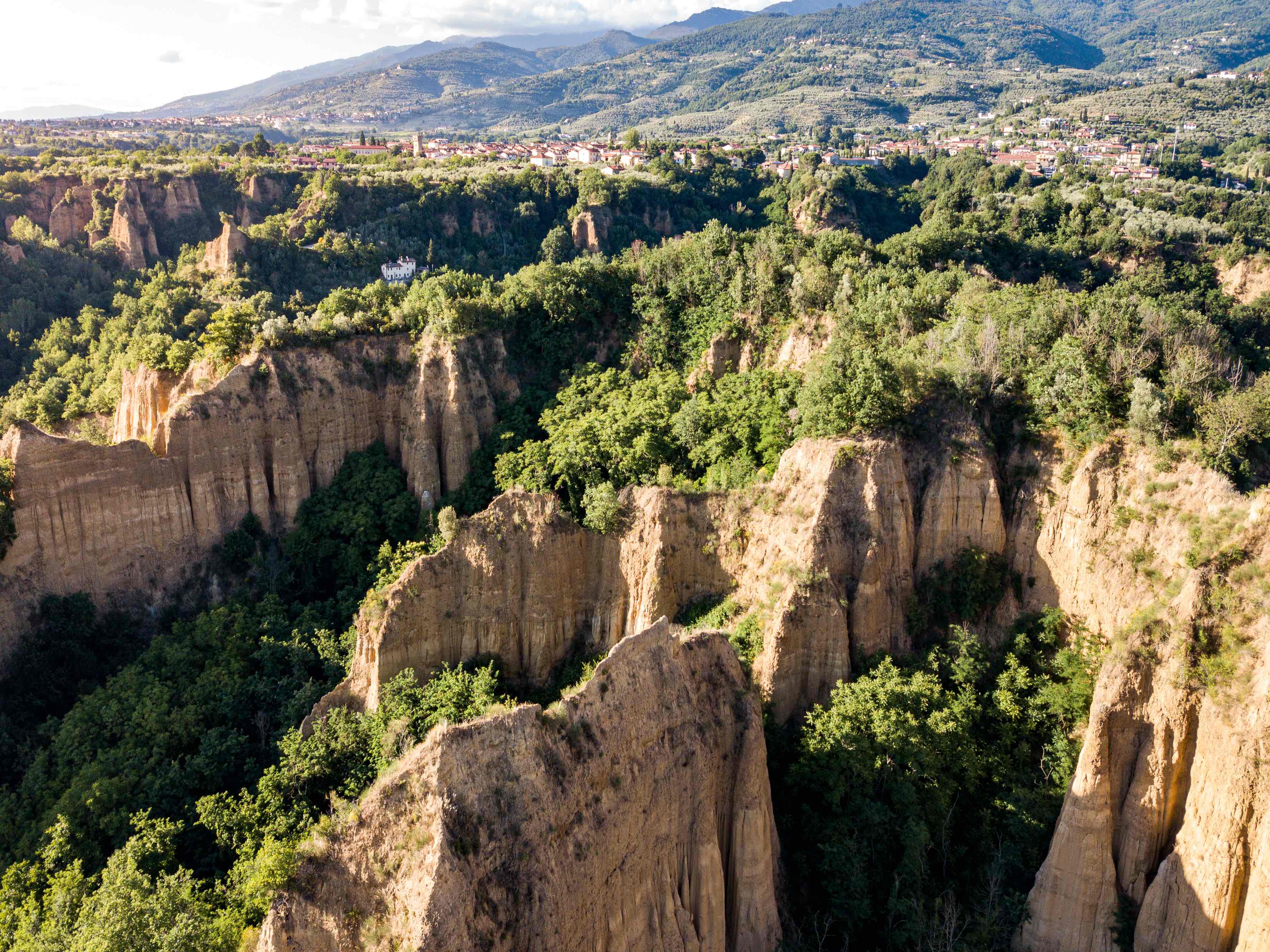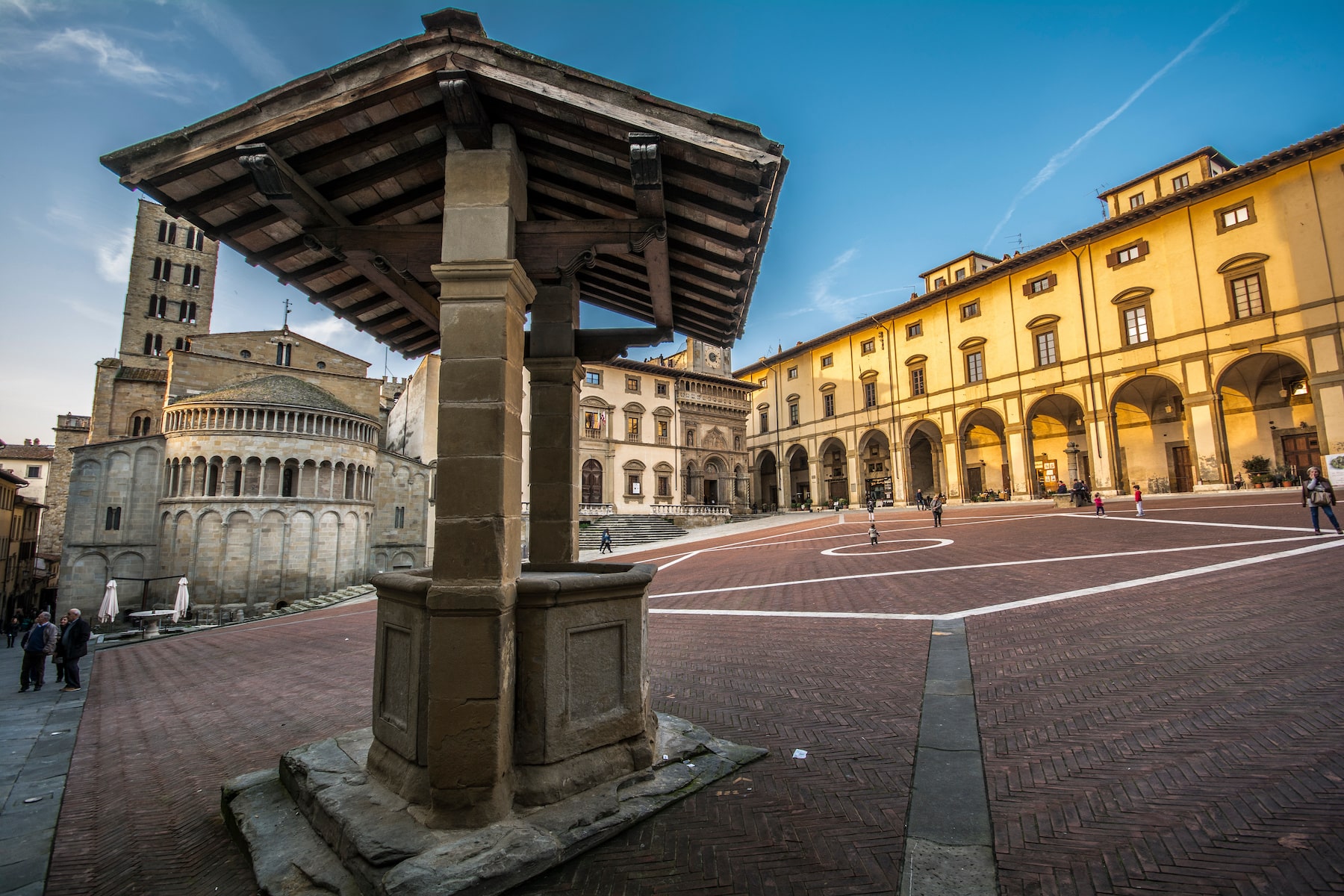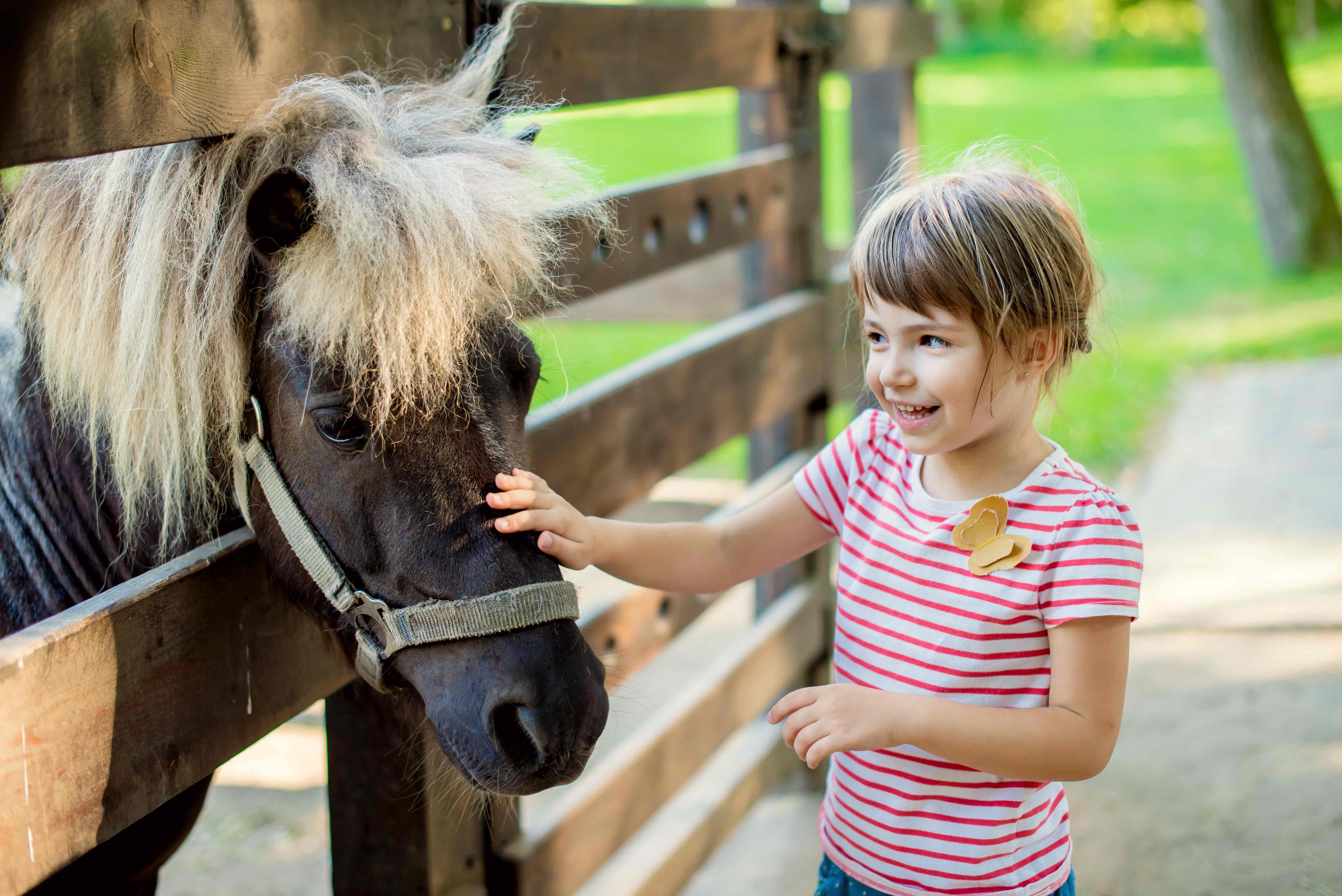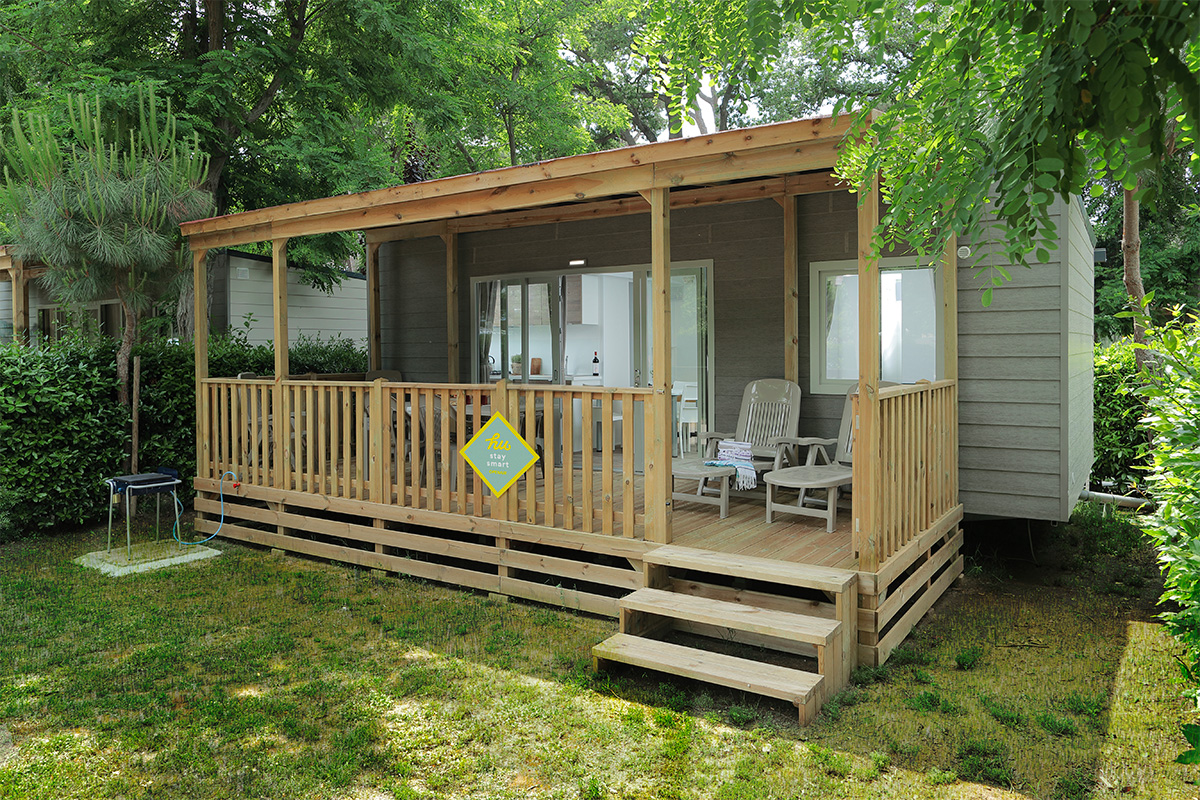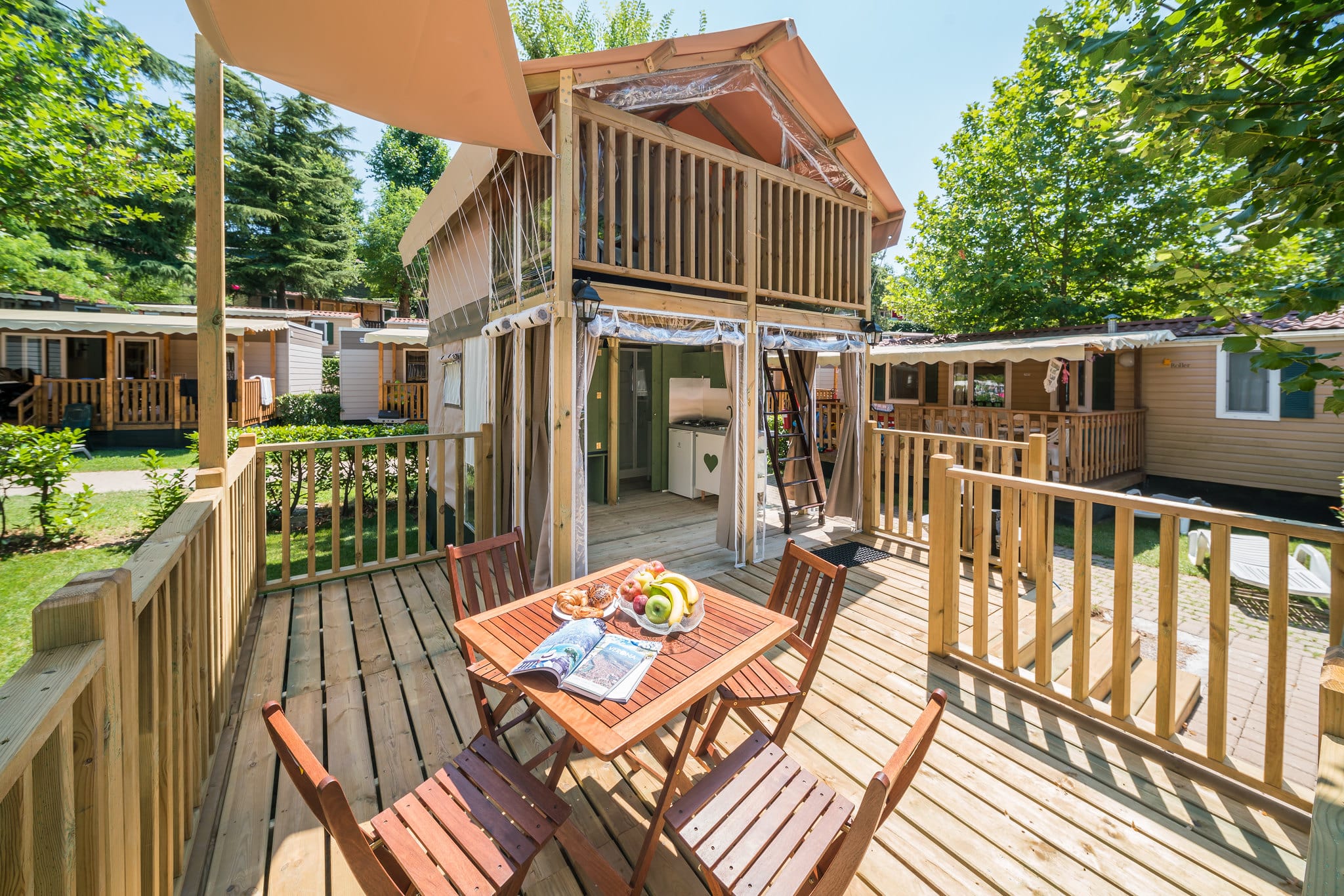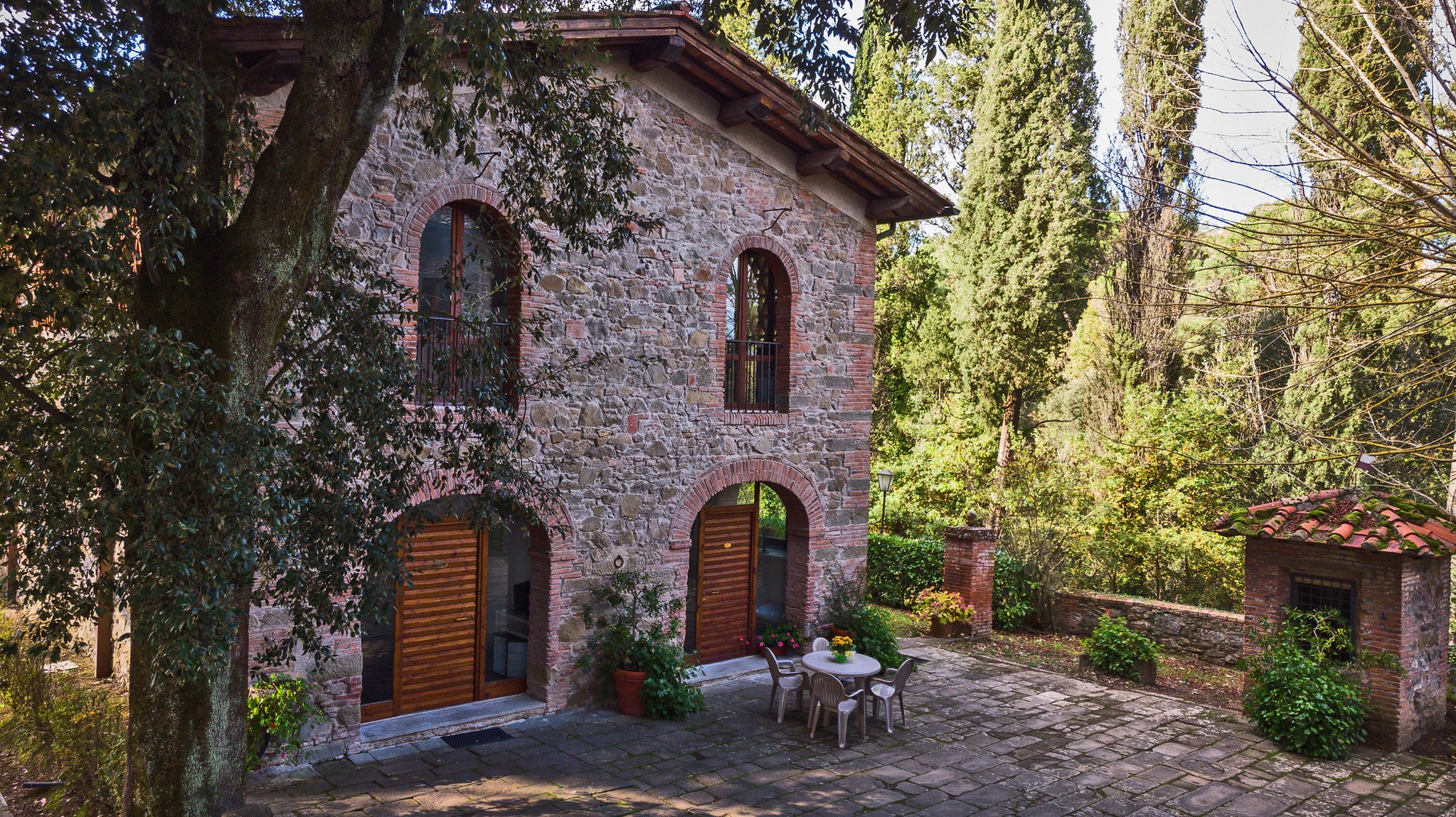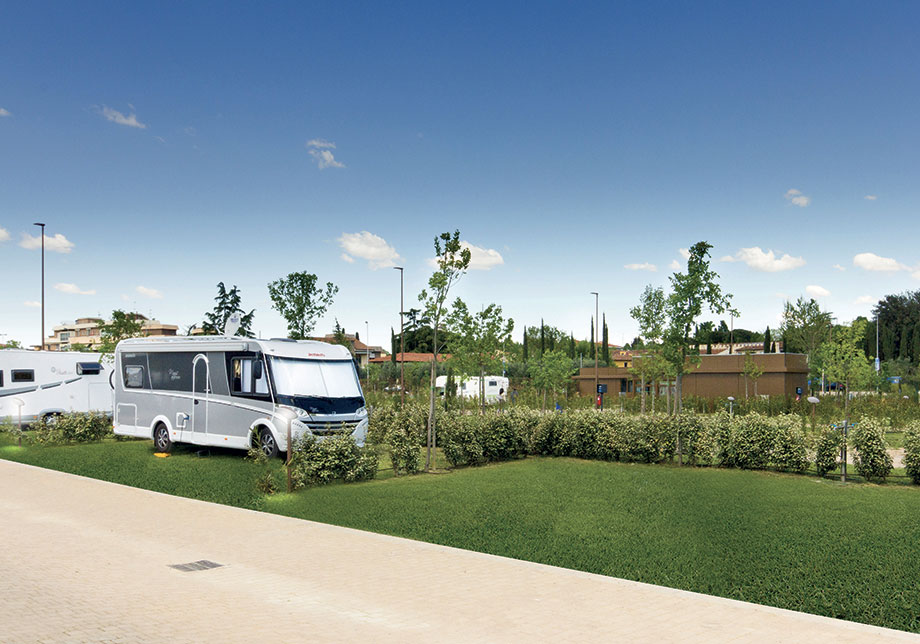Every element blends perfectly with the landscape, which both embraces and dominates everything you see. Every bend in the road reveals a new view: a charming village emerging unexpectedly from the woods, a villa glowing in the moonlight, an abbey or a castle with crenellated towers where modern life feels like it never quite arrived. What will strike you about Chianti is its living, intense, and powerful nature a green masterpiece where those who dare to ask the forest for land do so only to grow vines and olive trees, producing the deep red wine and vibrant green oil that are the cornerstones of every Chianti meal.
Here, the slow, patient rhythm of nature goes hand in hand with the pleasures of good food, wrapping you in a genuine harmony that’s hard to find anywhere else.
Greve in Chianti
Greve in Chianti is the first stop on your journey through the Chianti region – a small village that perfectly captures the spirit of this land. At its heart is Piazza Matteotti, where the statue of Giovanni da Verrazzano stands tall, gazing out over the landscape as if in search of new horizons. Tourists are always strolling under the porticos, browsing local shops filled with traditional products, lively trattorias and wine bars – and you won’t be able to resist stepping in for a bite.
One of the most iconic places is Antica Macelleria Falorni, where old butcher tools are proudly displayed on the walls. If you’re after a rustic vibe, head to Mangiando Mangiando, a little haven of Slow Food. And if you make it to Strada in Chianti, Da Padellina will delight you not only with a perfectly cooked Fiorentina steak, but also with verses from the Divine Comedy – available here in every language (and dialect) in the world.
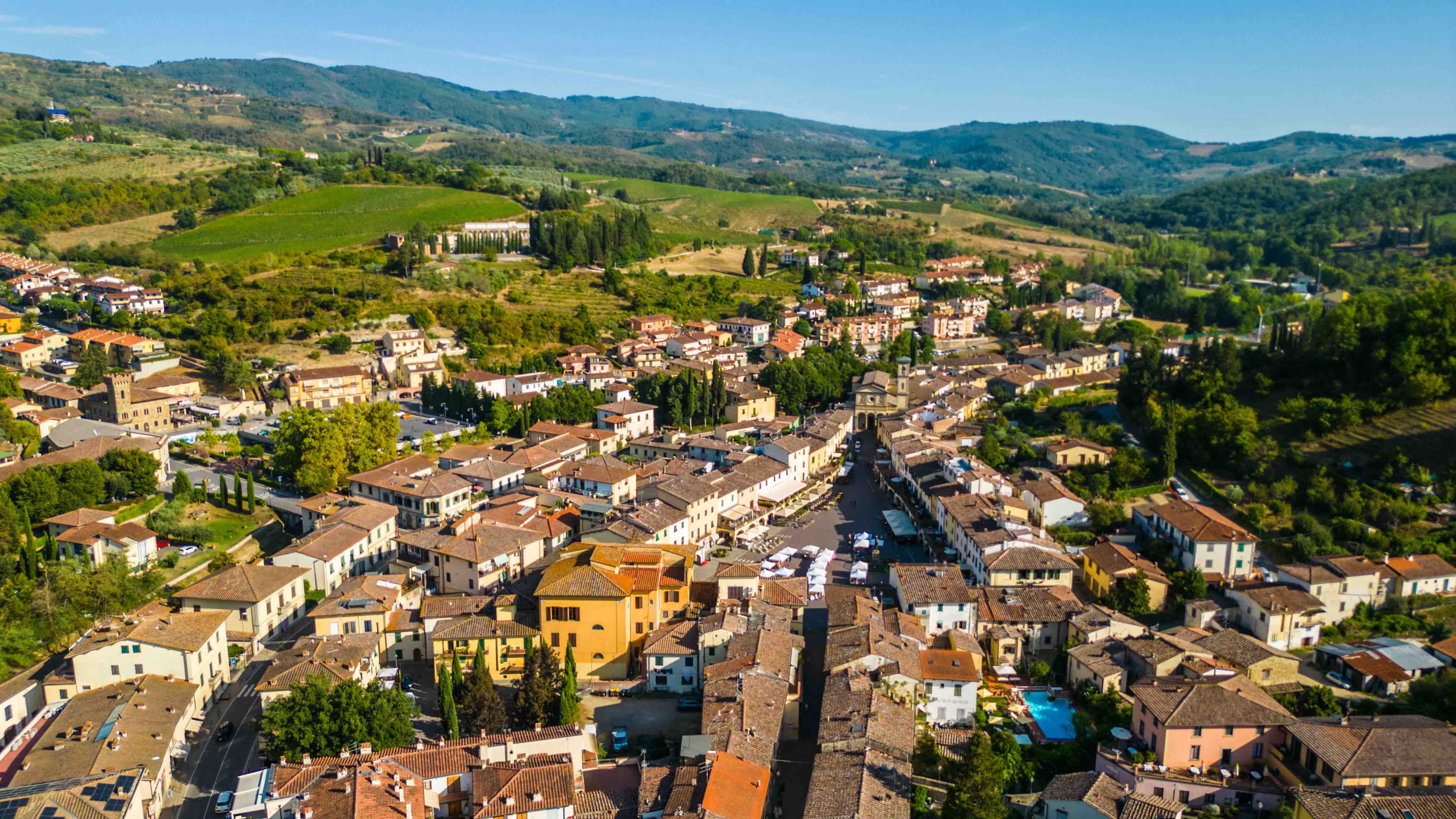
Greve in Chianti
Panzano in Chianti
This charming village in the heart of Chianti is surrounded by some of the region’s most renowned vineyards. Although its medieval centre has endured centuries of destruction, the village still retains a unique atmosphere and is a must-stop for food lovers – especially meat lovers – who’ll find plenty to satisfy their appetite.
If you happen to visit on a Sunday morning, the village is even livelier thanks to the weekly market. And if you're lucky enough to be around on the third weekend of September, don’t miss Vino al Vino, a small but well-loved wine event where Panzano’s main square comes alive with tasting stands from around twenty local wineries.
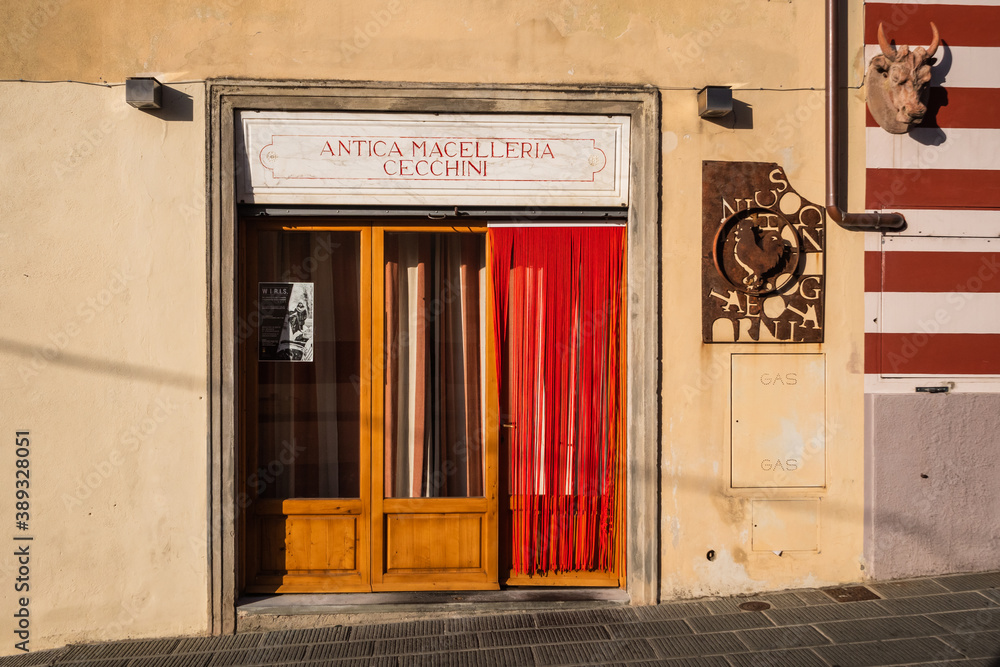
Antica Macelleria Cecchini
Gaiole in Chianti
In the heart of Chianti, Gaiole rises among hills and ancient castles: this picturesque village has become famous thanks to L’Eroica, a cycling event created to celebrate the history and heroes of the sport. Held every year between September and October, participants take on the challenge riding vintage bicycles along the legendary strade bianche – not only a symbol of the region’s heritage but also a sustainable way to explore Chianti while protecting its natural beauty.
For cycling lovers wanting to enjoy this experience all year round, there’s a permanent route that stretches through the Sienese countryside, with Gaiole as both starting and finishing point.
While the full route covers 209 km, there’s a more accessible 81 km version that mixes gravel and paved roads. It starts in Gaiole and heads south, where you’ll find the impressive Castello di Brolio, home to the welcoming Agribar Eroica. The trail continues toward Pianella and then climbs back north through enchanting woodlands to Vagliagli. Around the halfway point, you’ll reach Radda in Chianti, then head to Lucarelli, where you can take a break at Le Panzanelle or continue to Panzano in Chianti, famous for Enoteca Baldi and the iconic Macelleria Cecchini. The most challenging stretch takes you along a scenic white road to the medieval hamlet of Volpaia. The route ends by passing once more through Radda in Chianti and the village of Vertine, before returning to Gaiole.
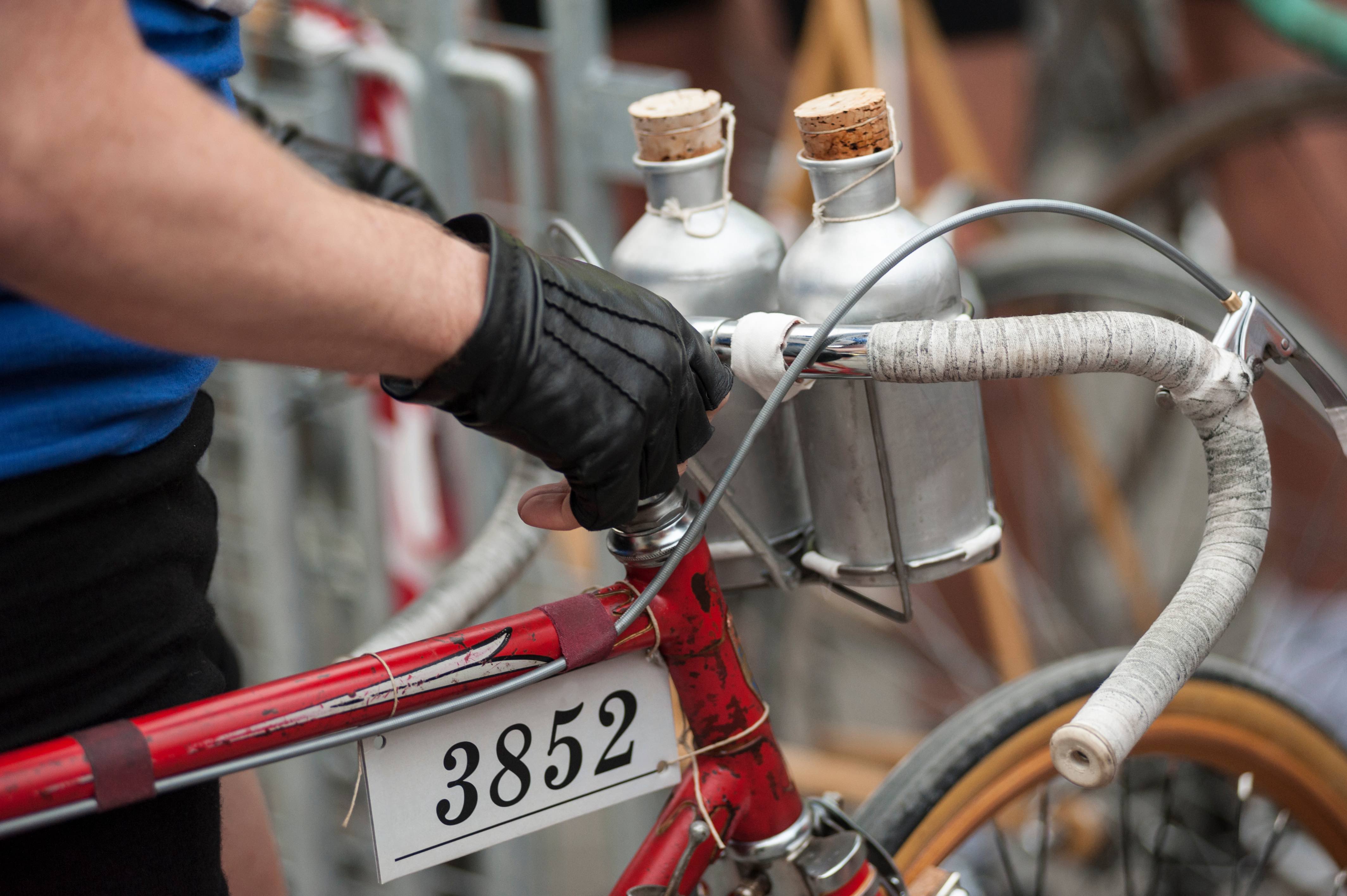
L'Eroica a Gaiole in Chianti
Chianti in a glass
It’s almost impossible to leave Chianti without visiting at least one winery. Badia a Coltibuono is a thousand-year-old abbey turned into a winery and charming farmhouse, without losing the peaceful atmosphere that once attracted the Vallombrosan monks to this place. At Pacina – named after the Etruscan god Pachna, or Bacchus – Giovanna Tiezzi and Stefano Borsa produce natural wines, as well as olive oil, spelt, chickpeas and lentils.
At Fèlsina, reached by a long avenue at the entrance to Castelnuovo Berardenga, the harmony of the landscape is reflected in the wine, while Tenuta San Vincenti is nestled in a pristine natural setting that brings out the quality and character of its wines.
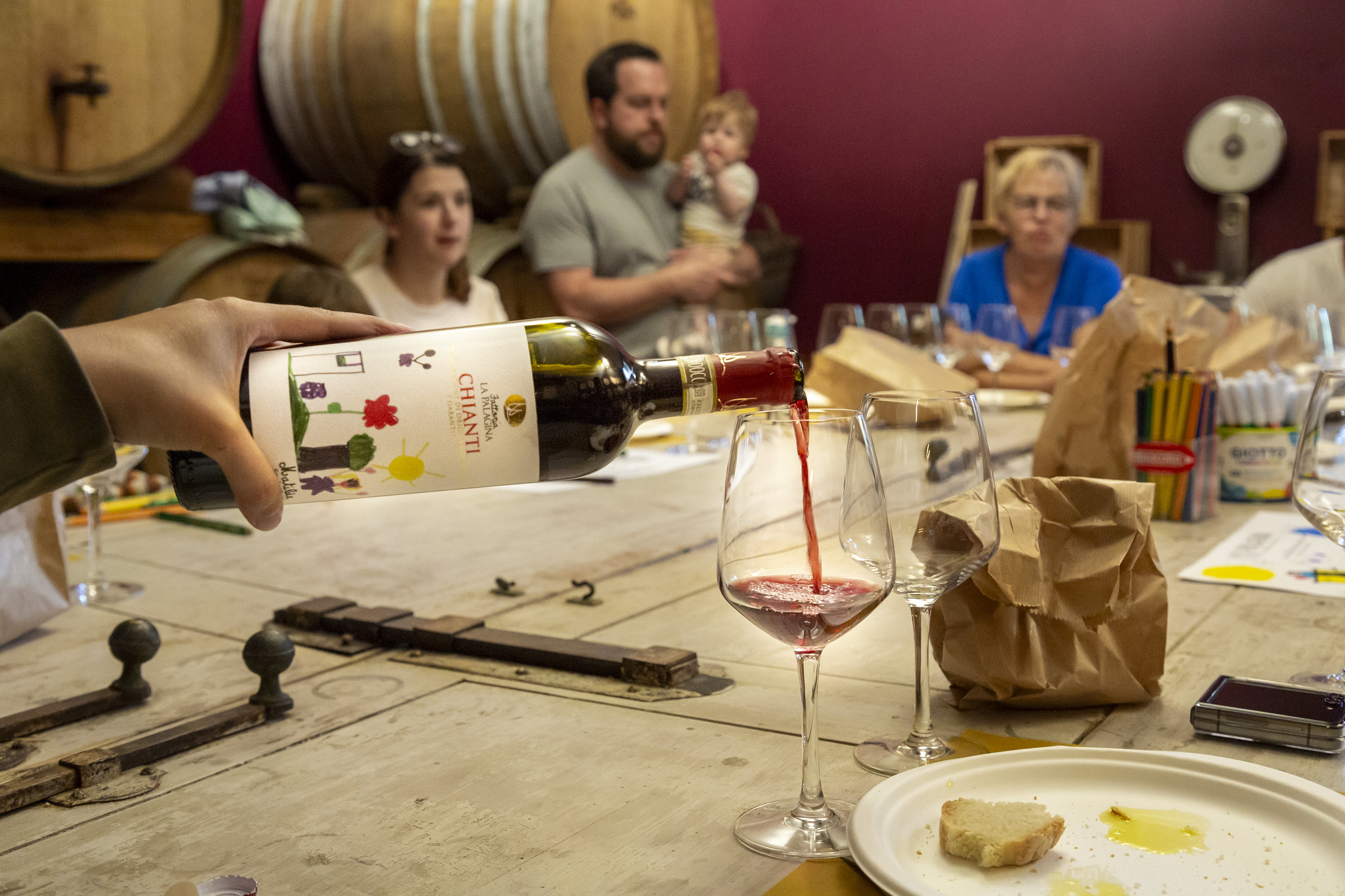
Degustazione di vino a Palagina


